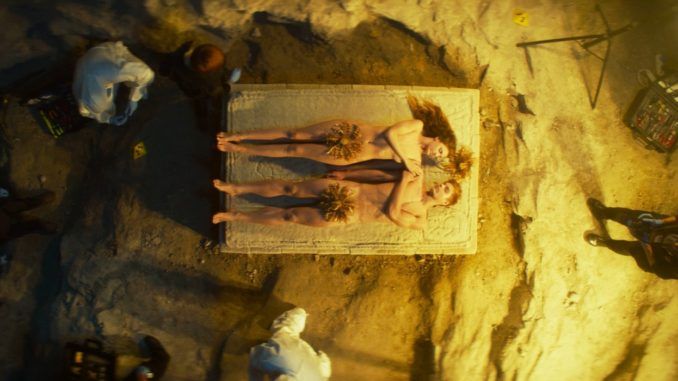
Rating: C+
Dir: Daniel Calparsoro
Star: Javier Rey, Belén Rueda, Aura Garrido, Alex Brendemühl
a.k.a. El silencio de la ciudad blanca
While from a warmer clime, this is basically a Spanish version of Nordic noir, though obviously takes influence from Silence of the Lambs as well. Twenty years ago, a ritualistic series of double murders shocked the city of Vitoria in the Basque country. Detective Unai (Rey) solved the crimes, putting away a local television presenter, Tasio (Brendemühl) for them. But now, with Tasio still in jail, the killings have started up again, exactly replicating the previous murders. Unai and his partner Esti (Garrido), under new boss Alba (Rueda), have to try and figure out who is responsible. Is it a copycat? Or is he still directing things, from inside prison?
It’s all serviceable, though the script appears to be at least one level too complex for its own good, and probably more. For example, you’ll be forgiven for rolling your eyes at discovering Tasio has a twin brother on the outside – and the script doesn’t stop there. We’ve seen this kind of thing before, with a killer creating artistic tableaux of his victims in public spaces. Though as usual, the film quietly ignores the practical considerations of how they manage to ship in the corpses and arrange them to meet their vision, without being disturbed. Naturally, the origins of the crimes are buried deep in the past, requiring Unai – who has his own dark history – to investigate a decades-old fire which all but wiped out a family.
 There are some memorable ideas and moments. Among the elements of the murders is the killer forcing live bees down the windpipe of his victims, which is pretty much nightmare fuel as far as I’m concerned. There’s also a gorgeously shot roof-top foot chase during a religious festival. But for every such element, there’s another which is an irrelevant red herring, or a tired cliché: you just know the hunky Unai is going to end up in bed with one of his colleagues. This occupies much of the second half, with Tasio all but forgotten. There’s also stuff which I didn’t completely understand, such as why he is called ‘Kraken’, and why the public finding out about this is such a big deal. Maybe the source novel explains things better?
There are some memorable ideas and moments. Among the elements of the murders is the killer forcing live bees down the windpipe of his victims, which is pretty much nightmare fuel as far as I’m concerned. There’s also a gorgeously shot roof-top foot chase during a religious festival. But for every such element, there’s another which is an irrelevant red herring, or a tired cliché: you just know the hunky Unai is going to end up in bed with one of his colleagues. This occupies much of the second half, with Tasio all but forgotten. There’s also stuff which I didn’t completely understand, such as why he is called ‘Kraken’, and why the public finding out about this is such a big deal. Maybe the source novel explains things better?
It’s an interesting choice to reveal who the murderer is early, well before the middle of the movie – inevitably, it’s someone very close to the investigation. Once that’s established, my interest did drop off, because the “why” of the crimes isn’t as interesting as the film seems to think. On the other hand, I did discover the leaves of the yew tree are highly poisonous, and a Google search confirmed that, “Even eating a handful of yew needles can have fatal consequences.” I should probably have looked that up in an incognito browser window, shouldn’t I. When bees and botany are the largest takeaways from a thriller, can’t help feeling a movie has missed the mark somewhat.
